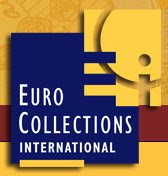
Canada 2009 $15 Ten Of Spades Silver Proof
The coins have been inspired by real-life playing card money used by colonials who arrived in Canada from France in the 17th century. Originally named "New France", the Canada of the late 1600's was an isolated and harsh place. It took months of travel to reach the homeland, travel that was made all the more difficult by the icy Canadian winters. On top of that the treacherous Atlantic Ocean was claiming countless sailing ships, and by 1685 the country faced huge shortages in everything including currency.
In a bid to keep the economy moving, the governor began issuing playing cards as promissory notes. Although seen as a desperate act, the system worked well enough and was used to pay everyone from soldiers to civil servants, merchants and tradesmen. The cards were offered as a promise that they could be "cashed-in" once a new shipment of coins arrived from France. To symbolise the various denominations issued the cards were sometimes cut in halves or quarters, or had their corners removed. The practice continued until 1729 when plain card stock replaced the playing cards and was circulated like regular banknotes until the British conquered Canada in 1759.
As the playing cards were generally destroyed after being cashed in to avoid counterfeiting, there is only one known deck of playing card money left in existence. From this deck these historically important silver coins were modeled, using designs made by Henri Beau, iconographic researcher at Library and Archives Canada. As noted in the image above the corners of the ten of spades have been clipped and documentation tells us that this meant the card symbolised 40 livres (Livre was one of a number of French currencies used from the middle ages).
Each of these official legal tender $15 ten of spades silver coins is struck to exacting proof standards from 31.56 grams of 92.5% sterling silver on a rectangular flan measuring 49.80mm x 28.60mm. Enhancing the coin design is the addition of colour, showing the ten spade symbols in their traditional black. The edge of the coin has been selectively gold-plated for further enhancement and appeal. On the obverse is the effigy of Her Majesty Queen Elizabeth II, along with the country and year of issue. Framing the central image is an intricate weaving pattern also taken from historical card designs. Each coin is presented in an official Royal Canadian Mint jewel case with numbered certificate of authenticity confirming the mintage of only 25,000 pieces.
Offered as an historical memento to the popularity of card games in colonial times, as well as the innovative steps a government was willing to take in order to help a growing economy thousands of miles away from it's homeland, the 2009 $15 Ten of Spades Silver Proof is a welcome addition to this already popular "playing cards in silver" series. Euro Collections International has stocks of these fabulous silver proof coins available to order now.









